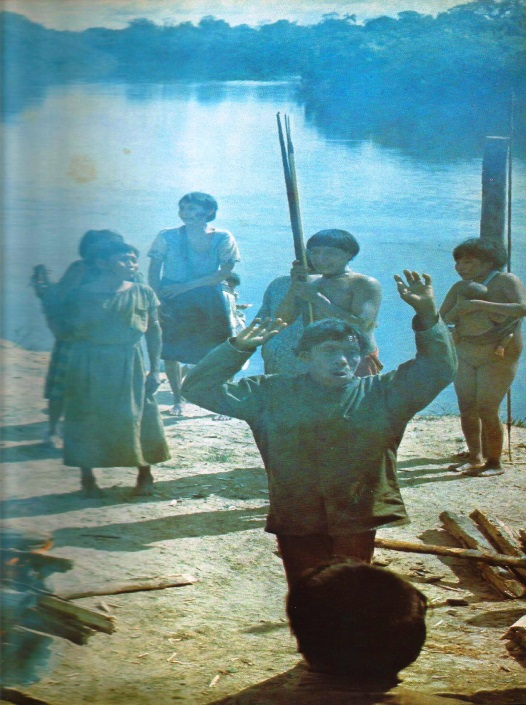
Through the ages of history, slowly but surely, at least out of our modern perspective, man provoked and forged his own particular way of existence within the norms of conduct towards his natural surroundings. He learned of his ecosystem and how to adapt and dominate important steps toward civilization. As he became sedentary the heavy burden of carrying, and caring for the elderly during long migratory trip has almost disappeared completely, which consequently offered better care and quality of life in general for a the entire community. Caring for their dead was also a very important part of life and that did not differ on our island.
 Pic.1 funeral urn with cover____________________________________________________________________________________________________________________
Pic.1 funeral urn with cover____________________________________________________________________________________________________________________
When we observe how each group or tribe cared for their deceased, we find that our Aruban ancestors also performed their special ceremonies of devotion and respect. Caring for their past away relatives was an honor. From archaeological findings, a lot can be determined of their social and political organizations and by studying remains of their graves, a differentiation in their status and hierarchy can clearly be established for each individual by their remains for example. Four or five different ways of burying were practiced by the inhabitants of the large villages. These differences represent, without a doubt, social differences in these Dabajuroid communities. The background of the recorded differences remains a mystery as yet, but the differences, by any doubt, are evidence of the status of people, families or groups within the community.  Pic.2 Fetus position burial______________________________________________________________________________________________________________________
Pic.2 Fetus position burial______________________________________________________________________________________________________________________
Dead people were buried in the soil within the village and some with special gifts in their grave. However, some were found without any gift. This means they were either buried without any gifts, or the gifts were perishable, and disappeared without leaving a trace for us. The gifts that we find in
 Pic. 3. The shaman is giving his esoteric speech in anticipation to the ceremony._____________________________________________________________
Pic. 3. The shaman is giving his esoteric speech in anticipation to the ceremony._____________________________________________________________
some dead were buried in large earthenware vessels or urns: direct-urn-burial. These vessels probably are the same as those discussed in our previous episodes, as large storage and liquid-containing vessels. Secondary-urn-burials are also found in the Dabajuroid villages. Such burials are the result of a complicated process: in fact, the dead is buried twice. The dead body is buried first in the soil, after some months or even years, the bones are excavated. These bones or bone remains subsequently get their permanent resting place in a rather small vessel. If, after such a procedure, the bones are buried in a large vessel, the archaeologist may misinterpret it as a direct-urn-burial.
We have a fairly good idea of the whole process of secondary-urn-burial from the descriptions existing on such ‘double’ burials. They are practiced up to this day by the Guajiro Natives, living on the peninsula of same name in the Venezuelan and Columbian border. More comparisons can be drawn between the Guajiro and the pre-Columbian population of Aruba, such as their environment, food and religion, which had all to do with how natives, particularly of this area, related themselves to the world of the dead and beyond; how to prepare each and one of their deceased relatives for their spiritual journey through the underworld and out in the land of their dead ancestors and friends.
There is evidence that the Dabajuroid people, apart from these four burial types within the village, had a fifth type: in caves outside the village.
Also, there is information on the dead themselves. The Dabajuroid Amerindians, in contrast to their pre-ceramic predecessors, had low and wide skulls. They were a new population element _and not totally sure to confirm_ that no inter-tribal mixing had occurred with the descendants of the earlier fisher-hunter-gatherer societies.
If you’ve liked our stories, we’ll be back again, next week with another episode. We recommend you make a reservation for a personal Etnia Nativa experience at etnianativa03@gmail.com and take Aruba home with you.















